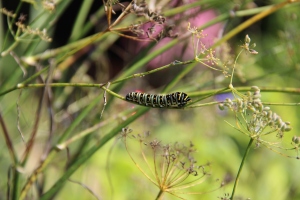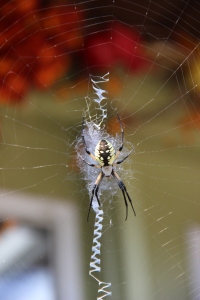Today’s post comes through the courtesy and expertise of Shiela Fuller.
If you started a backyard garden in May, odds are you’ve encountered a few insects in your plot by August. Some are peskier than others. The good bugs arrive right along with the bad, so it is helpful to know the difference.
Before you head off to your local garden supply to buy your pest eradicator, it’s best to identify your pest so you know exactly what you are annihilating. Then before you go, take another moment to research homemade, nontoxic pest controls. They are cheap to make, safer for you to apply, and a healthier choice for the environment. Some commercial products will also kill the good bugs as well as the bad.
What have you planted in your garden and what are the most common pests?
• TOMATOES.
Backyard tomato plants attract a wide variety of bad pests. Most you can pick off by hand and eliminate the need for any spray. The tomato hornworm is a common pest. They start out small and may go unnoticed until you see large areas of plant chewed away. Or you see the telltale peppercorn – like droppings they deposit on the plant leaves. They are green with lighter green shaped “v” markings and a single “horn” poking off the end of its body. Occasionally, you will find white rice shaped eggs attached to the hornworms body. They are the parasitic eggs of a good pest. The eggs suck nutrients out of the hornworm. It dies and the braconid wasp lives on.
• PEPPERS.
Pesticide spray is rarely needed for the pepper plant.
•GREENS.
If you see tiny holes in the leaves of your lovely greens, the flea beetle is most likely the culprit. They won’t usually destroy your plant and you will probably have sufficient supply, even if you have shared your greens with a beetle. Just wash and eat.
• POTATOES.
We love our potatoes and so does the Colorado potato beetle. The peskiest of the pests. If you decide to grow your own potatoes, you will become an expert inspector. It will be imperative that your plants are inspected twice a day. The potato beetle is prolific and the larvae, numerous. Begin by checking for the yellow eggs laid underneath the plant leaf. Remove the eggs. Dispose of them. Unfortunately, you will miss eggs and they will hatch. Numerous little specks of brown will begin to demolish your plant. Find and remove them. If you miss them they will quickly grow into reddish, slug like creatures. Pick them off. At every stage, they will eat your plant down till all that is left is a twig. Remain diligent in your search for potato beetle eggs and larva. Homegrown potatoes are worth it.
• HERBS.
Most herbs are bad pest free. In fact, many are planted to do just the opposite, ward off the bad. However, important to note is that dill and parsley, attract the black swallowtail butterfly. It may be difficult to find the tiny pearlized eggs, but you may find the droppings or the black, prickled larvae eating your precious herbs. They are capable of devouring the entire plant, so always plant enough for all to enjoy.
How Do You Attract the Good Insects?
Food, shelter, and water are necessary to encourage and keep the good insects in your garden.
• LADYBUGS
Plant herbs like chives or cilantro, and cosmos flowers to attract the ladybugs.
• PRAYING MANTIS
Raspberry, yarrow and fennel attract praying mantis.
• SPIDERS
The argiope is a large, harmless spider we should be thankful to see in our garden. With its spectacular coloring and circled web with zig zag stitching, it is a treasure to behold.
Food for good insects comes in the form of the bad insects that arrive in your garden. Provide daytime shelter for the good insects; low lying thyme or oregano offer good hiding places. Offer them a shallow tin of water and encourage them to make your garden their home.
Refrain from using insecticides/pesticides in your home garden. These products will actually keep the good bugs away from your garden. They are not good for the health of the insect. Or yours.
Shiela Fuller has been a Cornell University Project Feeder Watch participant for many years and an avid birder since 1988. Currently, she enjoys writing picture books, yoga, chicken raising, wildlife photography, and is the legacy keeper for her family.





